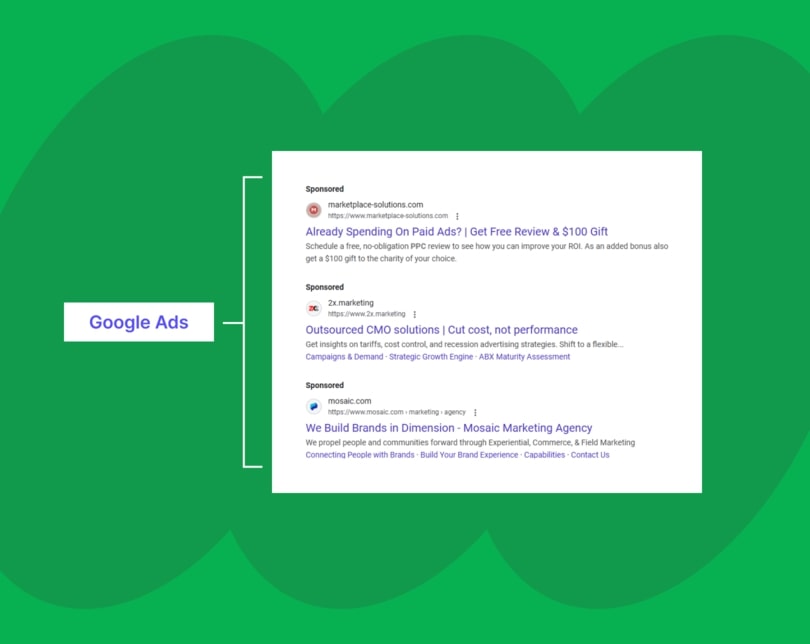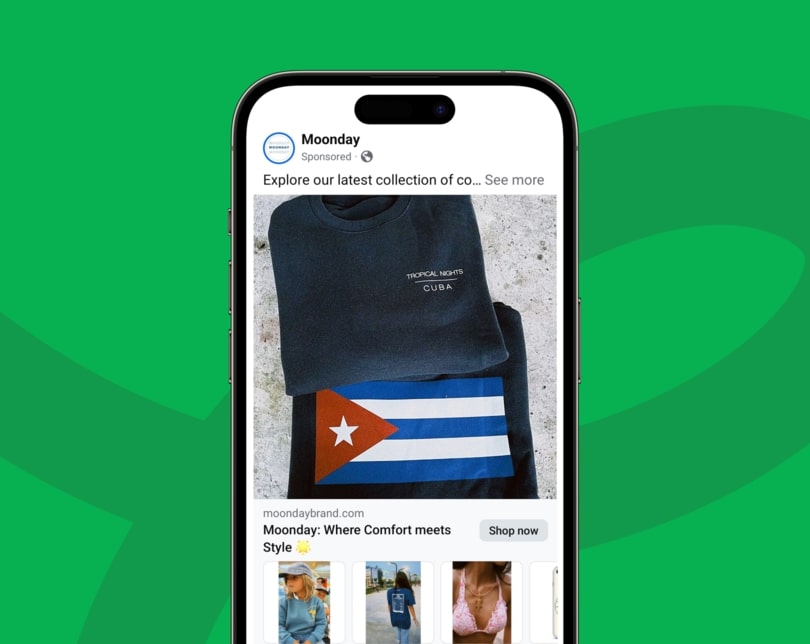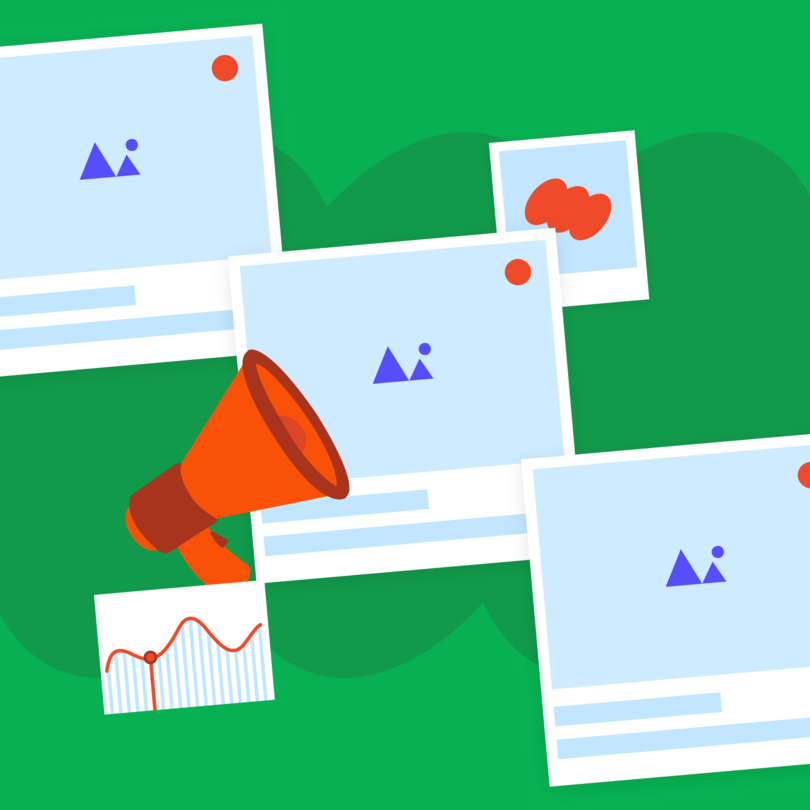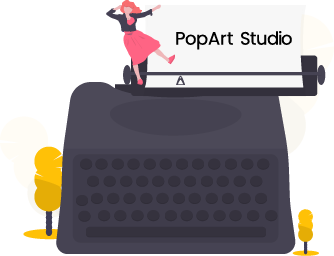Meta Ads, Google Ads, or both? Which is the best bet for your budget and results in 2025, and what should be the deciding factor?Today's digital advertising offers all these possibilities to meet your target audience where they spend their time online, but the more choices you have, the more challenging the decision.
Still, it’s rarely about the platform itself. What matters more are your goals and what fits your unique situation.
This article breaks down the difference, as Google Ads and Meta Ads appeal to different customer journey stages and audiences. By the end, you’ll have a clearer sense of which one aligns better with your objectives.
What Are Google Ads?
Google Ads is a pay-per-click (PPC) platform that lets businesses compete for keyword placements to show their ads across Google’s extensive advertising network.

Many marketers still refer to it as AdWords. Yet, this platform has evolved since its text-based ads into a layered, multifaceted system that now touches everything from Google search results to YouTube videos, Gmail inboxes, and a sizable network of partner sites scattered around the web.
When you run ads on Google, you’re simultaneously buying a ticket to position your business in front of people at the exact moment they’re looking for something you offer. In other words, you don’t have to wait for them to discover you because you’re stepping directly into their line of sight at the very top of their search results.
Keep in mind that Google Search and Shopping ads will show up when users enter keywords related to your product or service. They target people already looking to buy, which makes them more likely to take action.
Meanwhile, Google’s Display Network is a way for you to run image-based ads across millions of websites and target users based on behavior, interests, or past visits. It’s how a product that someone briefly viewed can quietly resurface alongside unrelated content, turning into a gentle reminder to return.
Perks of Google Ads
Marketers have had plenty of time to get to know Google Ads and build a lasting relationship with it. But do its benefits still hold up in 2025?
- Reaching Motivated Searchers: When a person is searching “emergency laptop repair nearby,” they’re probably not just curious. Instead, they might be staring at a blank screen hours before a deadline. Since these are high-intent users looking for immediate solutions, it’s an opportunity for your business to jump in and answer the call.
- Equal footing: Beyond relevance, Google Ads prioritizes concise, meaningful text and a user-friendly experience when determining which ads to reward. It’s not enough to be the highest bidder. This is why a small local bakery with a clear and targeted ad for “fresh sourdough near me” can outrank a larger chain simply by being more useful to the person searching.
- Pinpoint Location Targeting: Whether you’re selling umbrellas or accounting software for small businesses, you can reach the exact audience who needs your product. You can show your ads to people in the exact zip code where it’s raining or focus your budget on cities with a high concentration of startups or freelancers and skip the areas where your ideal users don’t live. Google Ads lets you zero in with nearly surgical precision by city, region, radius, or even by excluding places that don’t matter to your business.
- Different Ad Formats: You can use different ad formats with Google depending on your objectives. Text-based search ads and product-focused Shopping placements are only some of the options, but you can also run ads on YouTube videos.
- Unmatched Scale of Users: Google handles billions of searches every day, so it’s no wonder it’s one of the most powerful places to connect with potential customers. Every user, whether hunting for a local coffee shop or comparing computer prices, is most likely starting that journey on Google.
What Are Meta Ads?
Some marketers still think of Meta Ads primarily as Facebook Ads, without realizing how much the platform has expanded. This platform now gathers an ecosystem consisting of the Audience Network, Instagram, WhatsApp, and Messenger. By late 2024, Meta reached 3.35 billion daily users, with revenue per user rising to $49.63 from $44.60 the year before.

Meta Ads gives you almost the same option as Google Ads of tapping into an enormous pool of user data. You can target your intended audience based on precise criteria, including relationship status and niche interests.
It’s enough for a user to click on an ad out of curiosity, and you can later nudge them to purchase by offering a generous discount. The best part of Meta ads is that you don’t have to wait for people to search. Meta’s platforms help you introduce products before users even know they want them.
You can, therefore, spark interest where none existed and open the door to purchases that wouldn’t have happened otherwise.
Perks of Meta Ads
Google Ads may have an advantage when it comes to PPC, but here’s what’s so good about Meta Ads in 2025.
- Full-Funnel Firepower: Meta Ads are built to guide people from “never heard of you” to “where do I buy?” meaning it’s never merely about chasing clicks. Thanks to this, it has ad formats and objectives for every stage, whether you’re introducing your brand, collecting emails, driving sales, or reeling back window shoppers. You can run Lead gen forms, Awareness, Conversion, and Retargeting Ads.
- Easy to Use: Meta Ads are refreshingly intuitive, so you can create and launch campaigns without a steep learning curve. You can be a small business promoting a local event or even a global brand that wants to push forward a new product, but you’ll find that the platform’s simplicity makes it easy to hit the ground running with no headaches, just results.
- Cost-Effective Options: Although that’s not always the case, Meta tends to require a lower starting budget than Google. And since you can zero in on highly specific audiences, there’s less risk of throwing money at people who couldn’t care less.
- Allows Creativity: Google’s search ads are straightforward and text-based, which doesn’t feel much more exciting than a spreadsheet. You can be more creative with Meta Ads, as they prioritize the visual aspect. Carousel format is one of the easiest approaches to showcase your products in a dynamic way and add layers to your brand story.
Google Ads vs. Meta Ads: The Real-World Difference Between Google Ads and Meta Ads
Here’s how these platforms compare.
Push vs. Pull: How People Interact
The real difference between Google Ads and Meta Ads boils down to how people find you. Users actively search using Google because they’ve got a question or a need, and your ad is a possible solution.
On Meta, it’s the opposite. People are scrolling, killing time, not looking for anything in particular. Your ad cuts into that rhythm and needs to spark interest from nothing.
That changes how each platform works. A gym ad on Google might show up for someone typing “personal trainer near me.” On Instagram, the same ad has to stop a bored scroller in their tracks and make them imagine a better version of themselves.
Cost and Strategy: What You’re Really Paying For
Meta tends to offer cheaper impressions, more so if you tap into current social media trends like Reels or Story polls. The trick is that lower cost doesn’t always mean better results. Google’s traffic usually comes with stronger intent, which means a better shot at actual sales.
This gap also shows up in digital marketing agency cost. Google Ads tend to require more behind-the-scenes work, such as keyword research, bid adjustments, constant testing, and all of these incur additional fees. Meta campaigns, on the other hand, are faster to set up, but the creative side matters more. A great image or video can make or break the entire thing.
It’s Not a Choice, It’s a Sequence
Smart marketers don’t treat this like an either-or. They use both at different moments. Meta Ads can introduce your brand, grow curiosity, or retarget casual visitors.
Once people start googling your name or searching for your product, you leverage Google Ads to meet them at that critical moment of decision.
Together, they simply work better.
A skincare brand might catch someone’s eye on Instagram with a short reel showing dry skin before-and-afters. A few days later, when that person searches “best moisturizer for dry skin,” the Google ad is right there, appearing as familiar, trusted, and one click away from a sale.
The Best Way to Use Meta Ads and Google Ads
Here are all the tips you need to get the most out of Google Ads and Meta Ads.
1. Use Meta to Spark Curiosity
If no one’s searching for what you offer, it’s time to hit them where they scroll, and that’s where Meta Ads do their best work. Most users on Instagram or Facebook aren’t in shopping mode.
They’re killing time, watching stories, or catching up on memes. That’s your window to pitch in. A video that stops the scroll, a carousel that teases the product story, or a punchy headline that taps into a personal pain point are the kinds of ads that get noticed.
Say you’re selling a new ergonomic desk chair. You know it’s comfy and can make a world of difference for those struggling with back pain, but how do you get your intended audience to care?
On Meta, you’re not targeting someone searching for it. You’re nudging someone who’s quietly sick of their lumbago but hasn’t Googled solutions yet. Here’s an idea: create a short and precisely targeted video that shows a dramatic slouch-to-sit-up transformation to trigger interest.
2. Stay Visible with Retargeting
Once potential customers visit your site or interact with your ad, follow up. Not aggressively, just smartly.
Retargeting lets you show ads to people who’ve already shown interest. Maybe they checked your pricing page or added something to their cart but bailed. Now’s the time for a testimonial, a limited-time discount, or even a simple reminder that their cart is waiting.
3. Seal the Deal with Google
When people finally type “best ergonomic chair for home office” into Google, the intent is clear. They’re looking to buy.
This is where Google Ads shines. Your search ad should lead them straight to a clear and fast-loading product page without any fluff and guessing. Just the answer they were looking for.
4. Align Spend with Purpose
The key is to treat each platform differently and make that your holy grail. Use Meta to build interest, gather leads, and create familiarity, while you use Google to convert. And keep your budget in check to avoid wasting money on cold clicks or missing hot leads.
5. Keep Testing What Works
Both platforms shift fast. What hooks people one month might flop the next one. This is why you have to test new creatives, tweak audiences, and track what actually brings in revenue and not just clicks.
Conclusion
You don’t have to pick between Meta Ads or Google Ads. You can and should use them both.
One can help you reach people who are already looking for what you offer and are ready to act. The other can help you introduce something new or stay top-of-mind with your audience when creating the buzz.
You might need help to pull it off, but experts offering Google AdWords or Facebook advertising services can guide you. Whatever you choose, remain flexible and let the right data steer your decisions.





